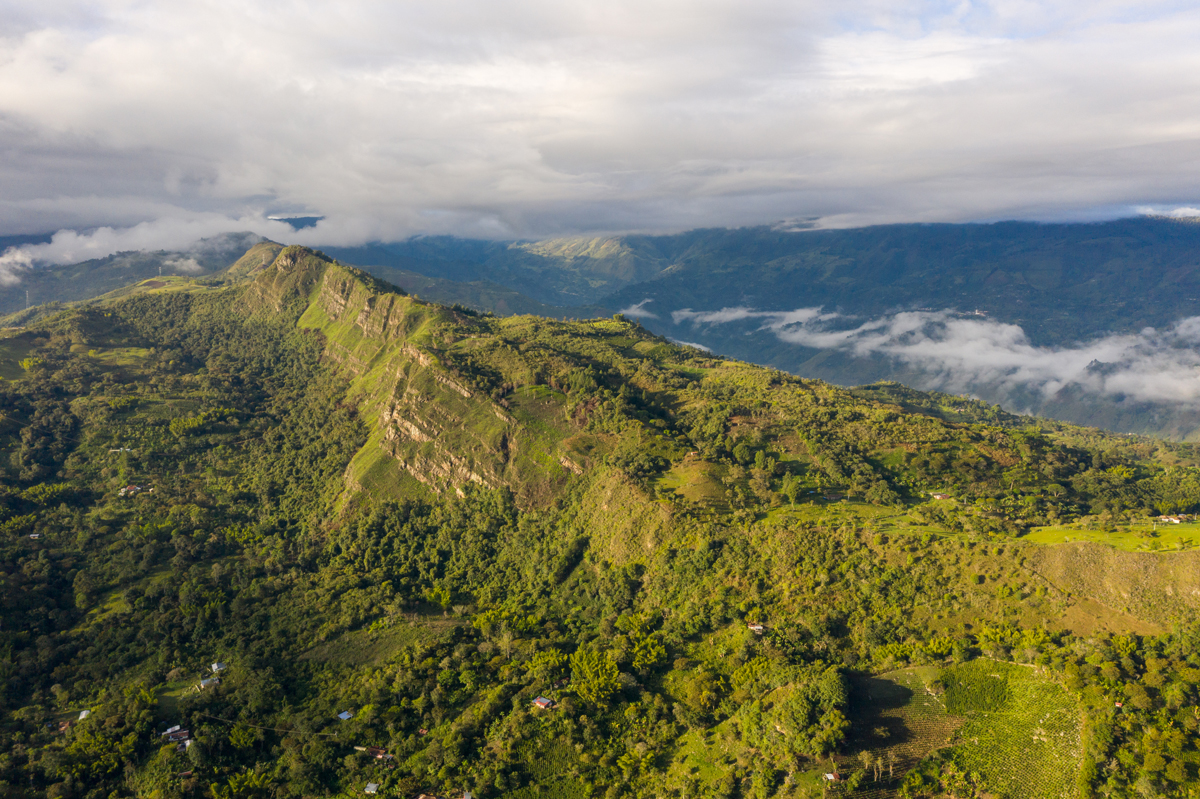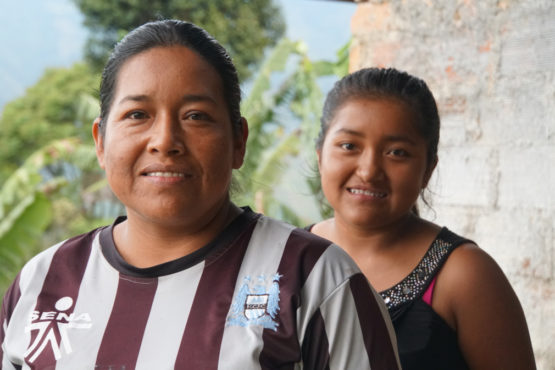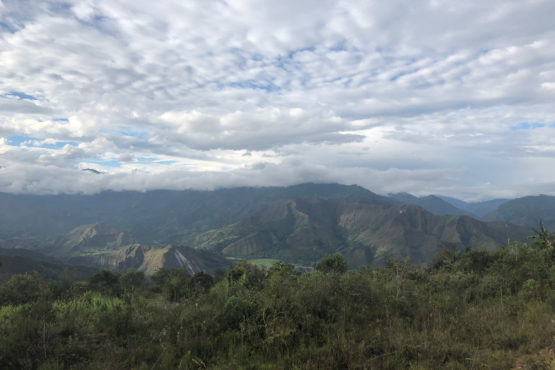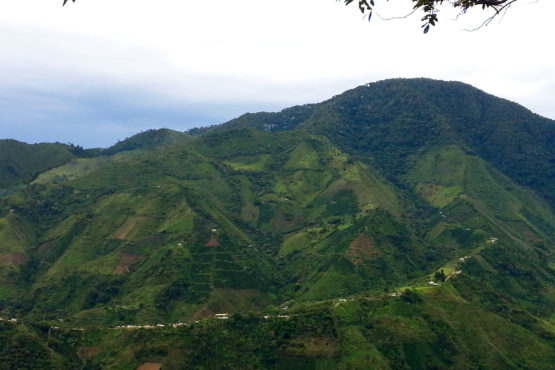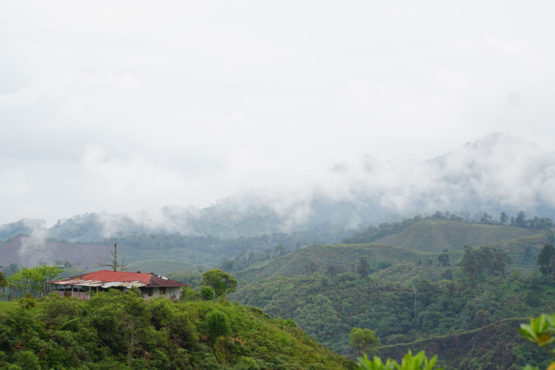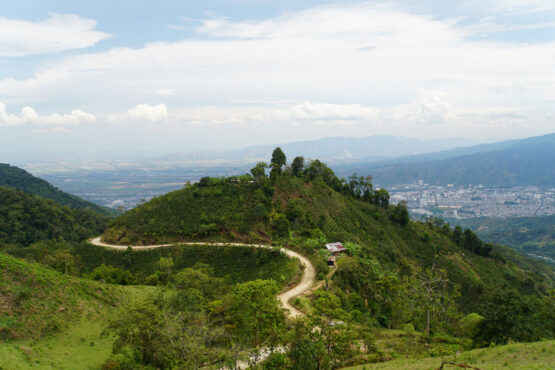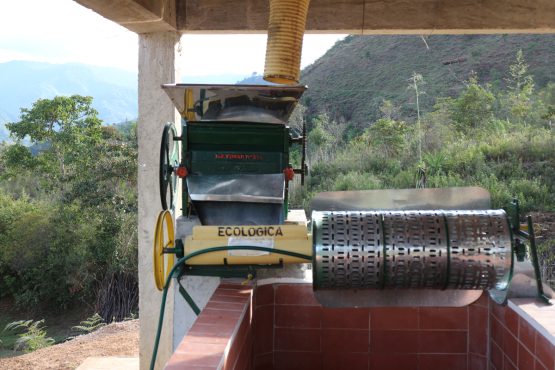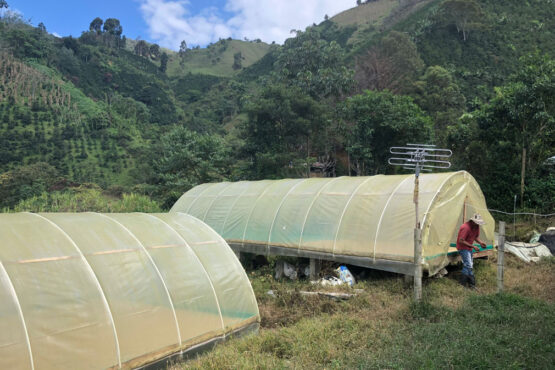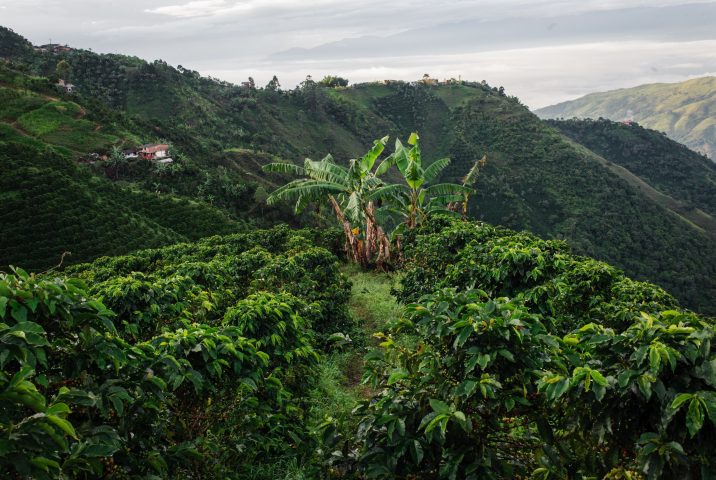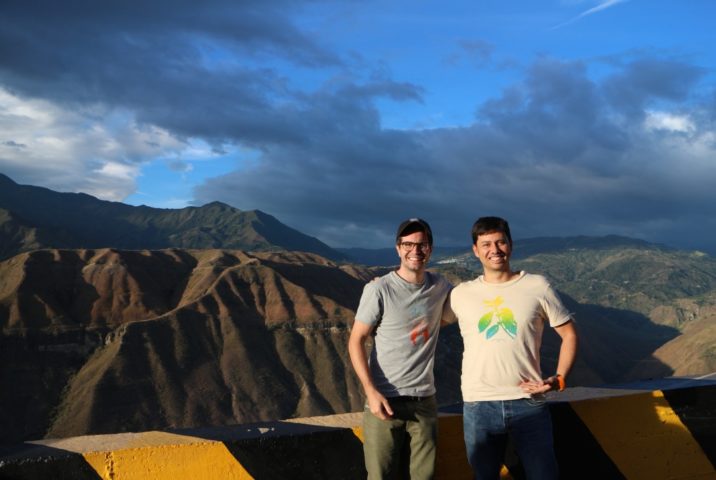Macizo Colombiano
Great intensity and sweetness, with red apple, chinotto and sultana sweetness. Juicy body, balanced by black tea and toasted almond.
This coffee is named after the Great Colombian Massif, or Macizo Colombiano, a vast mountainous area that covers part of the states of Cauca, Tolima and Huila in the west of Colombia. This area is part of the Andean mountain range and is covered in snowcapped mountains, with elevations as high as 3,500m above sea level. The region is Colombia’s richest water source and many of the country’s largest rivers are born here, including the Cauca and Magdalena Rivers. Abundant, clean water and rich volcanic soil makes this area ideal for extensive agriculture and for exceptional coffee production.
This lot of Macizo Colombiano was blended from coffees produced by 18 smallholder farmers from the area around the municipalities of Rio Chiquito, Paez and Inza in the state of Cauca, along with China Alta and Laureles in the state of Tolima. The coffees were selected by cup quality and profile to make up this special lot, which represents exceptional value.
The farms that contributed to this lot are very small – on average just 1.5 hectares in size – and are located between 1800-2000m above sea level in the high hills and valleys of the Macizo Colombiano. Coffee producers in these areas farm traditionally, and grow a mix of Colombia, Castillo and Caturra varieties. Fertilisation occurs around three times a year, usually after manual weeding, and pesticides are rarely used.
ABOUT INZÁ, CAUCA
The municipality of Inzá is located in the corner Cauca state, bordering with Tolima and Huila and looking out to the west over the Pacific Ocean. This region has excellent conditions for growing high-quality coffee, with high elevations and rich volcanic soil. The plateau has a very stable climate year-round thanks to its proximity to the equator and the surrounding mountains, which protect the coffee against the humidity of the Pacific and the trade winds from the south. This region is an important source of water and wildlife for Colombia, in addition to being prime coffee-growing land.
Inzá is the traditional home of the Nasa (or Páez) people, one of Colombia’s largest indigenous groups. During the Spanish invasion of Colombia, many of the Nasa were able to avoid bloodshed by escaping to the rugged hills and high plateaus of the Andes Mountains, where the Spaniards were unable to pursue them. Today, the Nasa economy relies on agriculture, and society is organised into tight knit farming communities who distribute duties equitably under the guidance of cabildos, or locally elected councils. Like many indigenous groups across Latin America, the Nasa have spent decades lobbying for the return of their land rights, finding success in recent years. Their struggle has led to legal recognition of the fundamental rights of indigenous peoples, including recognition of the autonomy of their communal indigenous lands in the 1991 Colombian Constitution.
Coffee from Cauca has historically been very difficult to access due to the region’s isolation and instability. For many years this part of Colombia was under the control of Colombia’s notorious rebel group, the FARC, and as a result, it was unsafe and violent. Since 2012, safe access to this region has been possible as a result of peace talks between the national government and the rebels. Thanks to these efforts, more and more stunning coffees from small producers in the region have become accessible to international buyers.
Our export partners for this coffee, Pergamino, have worked hard commercialise specialty-grade coffee throughout Cauca, and are now able to source some outstanding coffees from very dedicated producers. They work closely with the producers to give them feedback on their coffees (provided by Pergamino’s expert team of cuppers) and provide top up payments when the coffee is sold at a higher premium.
Head here to learn more about the work of Pergamino.
ABOUT TOLIMA
The word ‘Tolima’ comes from the local Pijao language and means a “river of snow or cloud”. The region sits on the Cordillera Central, in the middle of the three mountain ranges that provide a range of microclimates well-suited to high-quality coffee production. Coffee is the leading agricultural activity in the region, followed by beans and cattle.
The most well-known regions in Tolima for specialty coffee are Planadas and Chaparral in the south. This coffee comes from the areas surrounding Ibagué, which is further north in the state. The city is also known as the “Ciudad del Abanico” or the “city of the folding fan” because when you look at it from the sky the rivers running from the mountains split up the crops of rice and cotton, and it looks like a beautiful handmade folding fan.
Coffee from Tolima has historically been very difficult to access due to the region’s isolation and instability. For many years this part of Colombia was under the control of Colombia’s notorious rebel group, the FARC, and as a result, it was unsafe and violent. Since 2012, safe access to this region has been possible as a result of peace talks between the Colombian government and the rebels. Since this time some stunning coffees from small producers have become accessible to the international market.
Our export partners for this coffee, Pergamino, have worked hard commercialise specialty-grade coffee throughout Tolima, and are now able to source some outstanding coffees from very dedicated producers. They work closely with the producers to give them feedback on their coffees (provided by Pergamino’s expert team of cuppers) and provide top up payments when the coffee is sold at a higher premium.
Head here to learn more about the work of Pergamino.
HOW THIS COFFEE WAS PROCESSED
The coffees in this lot were selectively hand-harvested, with most labour being provided by the farmers and their families. They were processed using the washed method at each farm’s ‘micro-beneficio’ (mill).
Freshly picked cherries were pulped using a small manual or electric pulper. Because of the cooler climate in the regions this lot is from, producers tend to ferment the coffees for longer than usual and will often blend several days’ worth of pickings for up to 48 hours. Every day freshly picked cherry is pulped and added to the mix, which lowers the pH level and — along with the cooler temperatures — allows for an extended fermentation process. This fermentation process contributes to a vibrant, winey acidity in the coffee’s cup profile.
Following fermentation, the coffee was washed using clean water from nearby rivers and streams. It was then carefully dried (over 10–18 days) on parabolic beds, which are constructed a bit like a ‘hoop house’ greenhouse, and act to protect the coffee from the rain and prevent condensation dripping back onto the drying beans. The greenhouse are constructed out of plastic sheets and have adjustable walls to help with airflow, and temperature control to ensure the coffee can dry slowly and evenly.
Once dry, the coffee was delivered to Pergamino’s warehouse, where it was cupped and graded, and then rested in parchment until it was ready for export.
